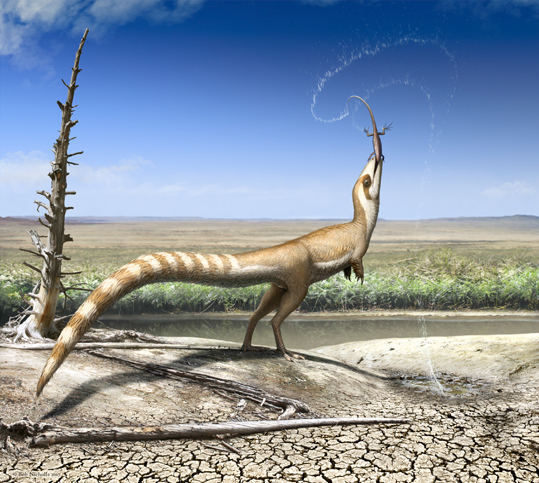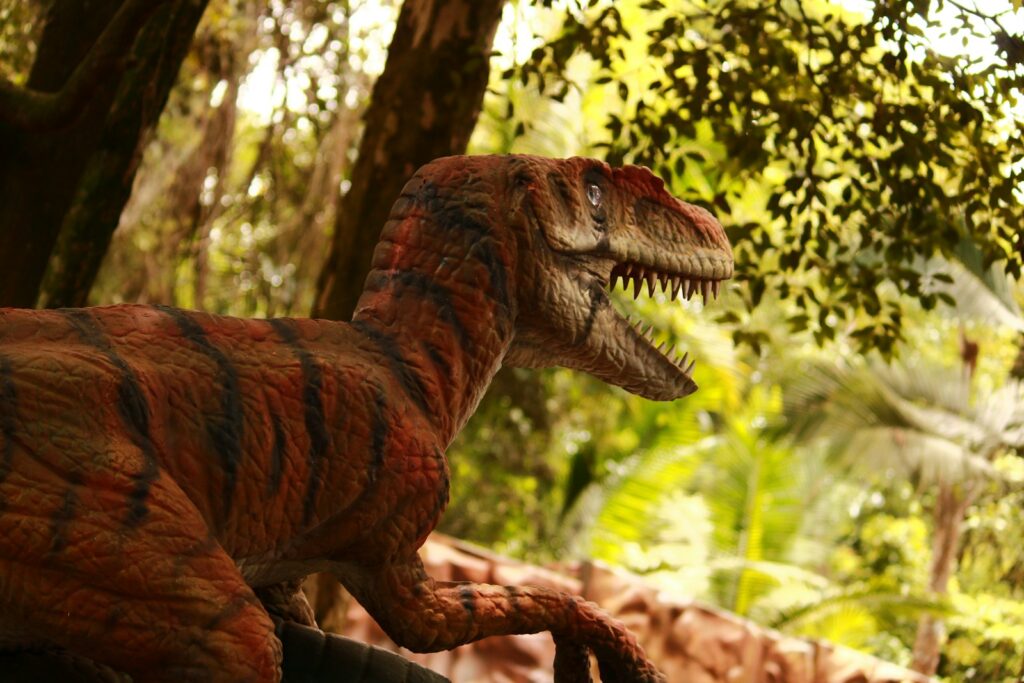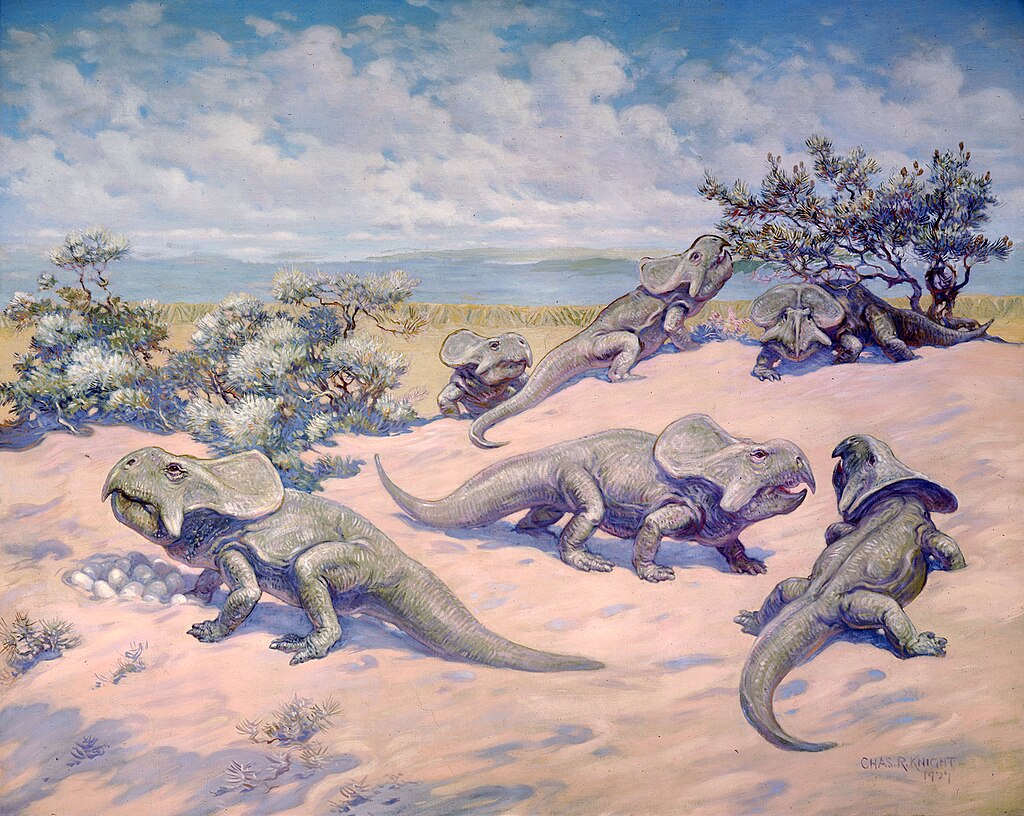When we think of dinosaurs, most of us conjure images based on films or conventional museum displays showing creatures with gray, brown, or green skin. However, recent scientific breakthroughs in paleontology have revealed that dinosaurs were far more colorful than previously thought. Using advanced techniques like analyzing fossilized melanosomes (pigment-containing organelles) and comparing dinosaur features to modern animal coloration, researchers have uncovered surprising color patterns that challenge our traditional perceptions. These discoveries not only transform our visual understanding of these ancient creatures but also provide insights into their behaviors, environments, and evolutionary adaptations. The following six dinosaurs showcase some of the most unexpected and fascinating color patterns that scientists have uncovered, painting a more vibrant picture of the Mesozoic world.
Sinosauropteryx: The Ginger-Striped Hunter

Sinosauropteryx holds the distinction of being the first dinosaur whose coloration was scientifically determined through fossil evidence. This small theropod, measuring about three feet long, roamed China during the Early Cretaceous period approximately 125 million years ago. Contrary to traditional representations, researchers discovered that Sinosauropteryx sported a striking “raccoon-like” pattern with a reddish-orange and white striped tail. The analysis of melanosomes in exceptionally preserved fossils revealed that this dinosaur had a rusty ginger-colored crest of primitive feathers running along its back and a countershaded body, darker on top and lighter underneath. This coloration likely served as camouflage, helping it blend with the reddish landscape of its environment while hunting small mammals and lizards. The distinct banded tail may have also played a role in species recognition or courtship displays, similar to patterns seen in modern birds.
Psittacosaurus: The Camouflaged Ceratopsian
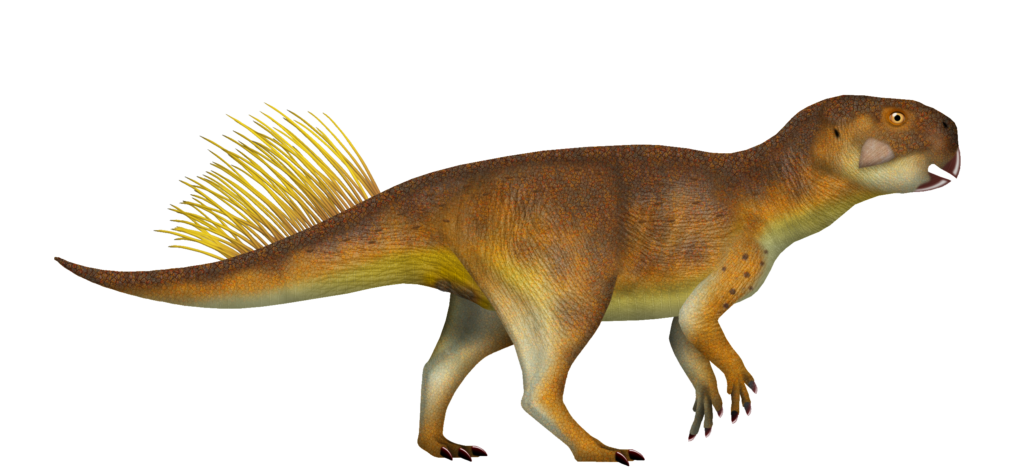
Psittacosaurus, whose name means “parrot lizard,” revealed one of the most sophisticated color patterns among dinosaurs when researchers examined an exceptionally preserved specimen from China dating to about 120 million years ago. This early relative of Triceratops exhibited complex countershading – darker on top and lighter on its underside – with a particularly dark back and light belly. What makes this pattern remarkable is that scientists determined it was specifically adapted for life in forested environments, where light filters through canopy gaps. The dinosaur also displayed a reddish-brown coloration on its face and shoulders, with possible spotted or mottled patterning along its flanks. Most surprisingly, researchers discovered that Psittacosaurus had a cloaca (posterior opening) surrounded by dark melanin pigments and large, dark “speckles” on its shoulder region, which may have helped break up its outline when viewed by predators in dappled forest light. This sophisticated camouflage strategy demonstrates that dinosaur coloration evolved for specific ecological niches.
Microraptor: The Iridescent Black Flyer

Microraptor, a crow-sized dinosaur with four wings, has completely transformed our understanding of dinosaur coloration with its unexpectedly glossy appearance. Living approximately 120 million years ago in the forests of what is now China, this small dromaeosaurid revealed a stunning iridescent black plumage similar to modern crows and ravens when scientists analyzed its fossilized feathers. The microscopic structures of the melanosomes indicated that Microraptor’s feathers had a metallic, glossy sheen that would have created blue, green, and purple iridescent reflections as it moved through its environment. This glossy black coloration is particularly significant as it suggests the dinosaur may have used its appearance for display purposes rather than camouflage, possibly in courtship rituals. The discovery challenges previous assumptions that early feathered dinosaurs would have evolved drab colors for concealment, instead showing that even non-avian dinosaurs developed complex, showy coloration patterns that may have played important roles in their social behaviors.
Anchiornis: The Black-and-White Checkered Dinosaur
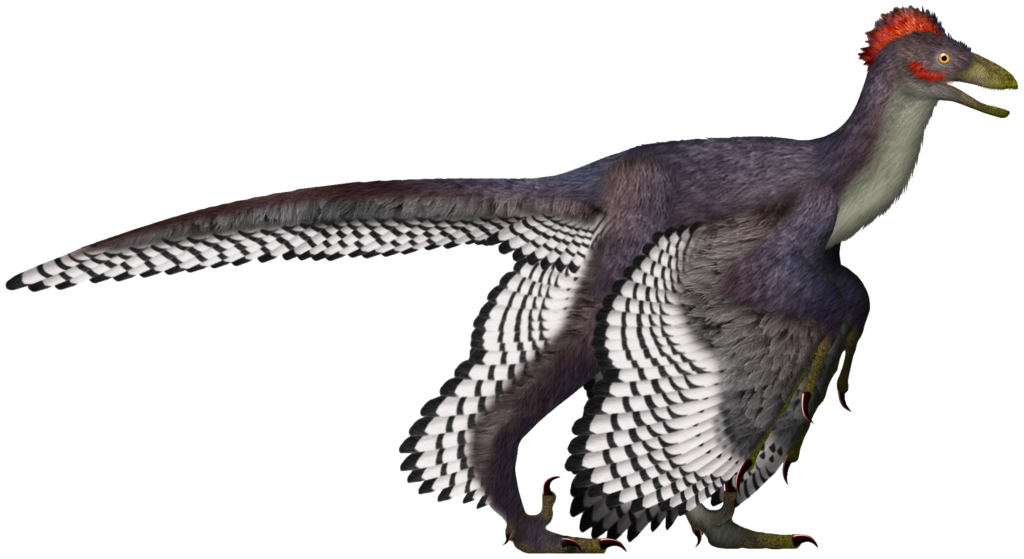
Anchiornis huxleyi, a small crow-sized feathered dinosaur from Late Jurassic China (about 160 million years ago), was the first dinosaur to have its entire body color pattern scientifically reconstructed. The results revealed a strikingly patterned creature that no paleontologist could have predicted. This dinosaur displayed a primarily gray body covered with white speckles or spots, black-and-white checkered wings reminiscent of modern magpies, and a rufous or reddish-brown crown on top of its head. The elaborate pattern, particularly the contrasting black-and-white checked wing feathers, suggests these markings played a significant role in display behaviors rather than camouflage. What makes Anchiornis particularly important is that it predates Archaeopteryx, traditionally considered the first bird, demonstrating that complex color patterning evolved in dinosaurs before the origin of birds as we know them. The presence of this elaborate color pattern in such an early feathered dinosaur indicates that visual communication and display may have been driving forces in the evolution of feathers, even before flight capability developed.
Borealopelta: The Reddish-Brown Armored Tank

Borealopelta markmitchelli represents one of the most extraordinary fossil discoveries in recent years, as this armored nodosaurid was preserved with its original skin and color pigments intact. This 18-foot-long, tank-like dinosaur lived during the Early Cretaceous period about 110 million years ago in what is now Alberta, Canada. When scientists analyzed its remarkably preserved remains, they found evidence that Borealopelta had a reddish-brown coloration across its body, with a slightly lighter underside. This coloration is particularly surprising for such a massive, heavily armored animal, as conventional wisdom suggested that large dinosaurs with body armor wouldn’t need camouflage. However, the countershading pattern indicated that even this well-protected dinosaur faced significant predation pressure from the enormous tyrannosaurs and other predators of its time. The reddish-brown hue likely helped it blend into the reddish soil and vegetation of its environment, demonstrating that even massive armored dinosaurs evolved coloration for concealment, not just for display or thermoregulation purposes.
Caihong: The Rainbow-Headed Iridescent Wonder
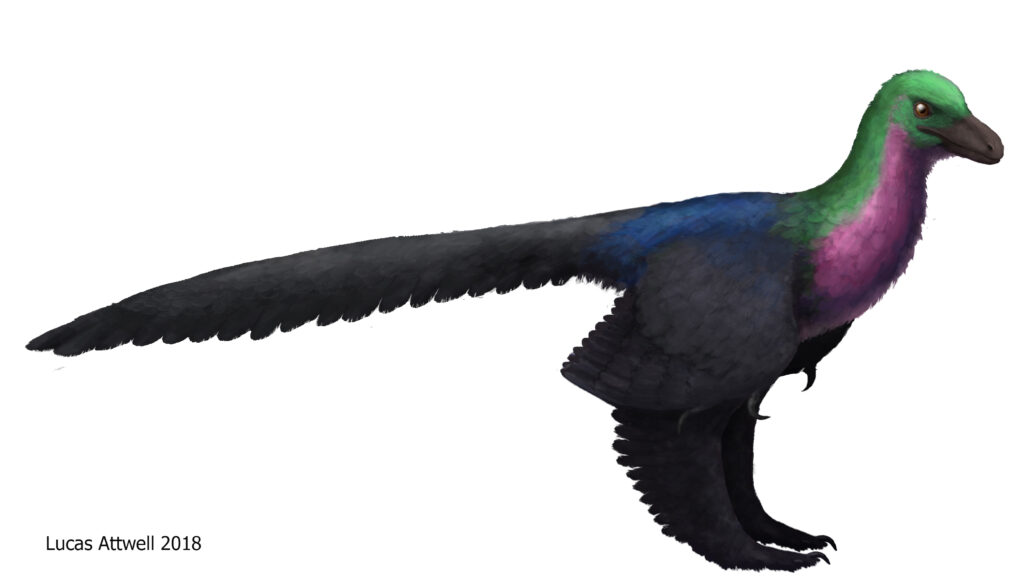
Caihong juji, whose name appropriately means “rainbow with a big crest” in Mandarin, represents perhaps the most spectacularly colored dinosaur discovered to date. This chicken-sized dinosaur lived approximately 161 million years ago during the Late Jurassic period in China. What makes Caihong truly remarkable is the discovery of iridescent rainbow-colored feathers on its head, neck, and chest. Analysis of exceptionally preserved feather melanosomes revealed platelet-shaped structures identical to those that create iridescent colors in modern hummingbirds. These structures would have created a shimmering effect that changed colors depending on the viewing angle, producing hues of blue, green, and bronze. The dinosaur also featured a bony crest on its snout and long ribbon-like feathers on its neck and chest, likely used for display. Surprisingly, Caihong combined primitive and advanced features, with bird-like feathers but dinosaur-like skeletal features. This evidence of brilliant iridescent coloration in a dinosaur that predates many bird-like innovations suggests that flashy colors evolved for display purposes long before many other avian characteristics.
How Scientists Determine Dinosaur Colors

The revolutionary discoveries about dinosaur coloration stem from relatively recent advances in paleontological techniques. The key breakthrough came with the realization that melanosomes, the cellular structures containing melanin pigments, can be preserved in fossils and maintain distinctive shapes associated with specific colors. Different types of melanosomes create different colors – rod-shaped eumelanosomes produce black and gray colors, while spherical phaeomelanosomes create reddish-brown hues. By examining these microstructures under powerful electron microscopes, scientists can compare them to melanosomes in modern bird feathers to determine the likely colors. Additionally, researchers analyze the arrangements of these melanosomes to identify structural colors like iridescence, which result from light refraction rather than pigmentation. Chemical analysis using techniques like synchrotron rapid scanning X-ray fluorescence has also revealed traces of original organic compounds in some exceptionally preserved fossils. These methods, combined with comparative studies of coloration patterns in modern animals that share ecological niches similar to those of dinosaurs, allow scientists to make increasingly accurate reconstructions of dinosaur appearances with much more confidence than the speculative colorations of previous decades.
The Evolutionary Significance of Dinosaur Coloration

The unexpected color patterns discovered in dinosaur fossils have profound implications for our understanding of dinosaur evolution and behavior. The presence of complex coloration strategies such as countershading in dinosaurs like Psittacosaurus and Borealopelta suggests that predator-prey dynamics were significant driving forces in dinosaur evolution, even for seemingly well-protected species. Bright, iridescent coloration in species like Microraptor and Caihong indicates that sexual selection and social signaling were important aspects of dinosaur behavior, similar to modern birds. These discoveries also strengthen the evolutionary connection between dinosaurs and birds, demonstrating that many features previously thought to be exclusively avian, such as complex color patterns for display, actually evolved earlier among non-avian dinosaurs. Furthermore, the presence of specific coloration adapted to particular environments provides valuable ecological information, helping scientists reconstruct ancient habitats with greater accuracy. Perhaps most significantly, these color discoveries challenge the long-held view of dinosaurs as drab-colored reptiles, instead revealing them as visually dynamic creatures whose coloration evolved for sophisticated ecological and social purposes comparable to those seen in modern animals.
Color and Dinosaur Behavior: New Insights

The unexpected color patterns discovered in dinosaur fossils have opened new windows into understanding dinosaur behavior and social dynamics. The iridescent plumage of Microraptor and Caihong strongly suggests these dinosaurs engaged in complex display behaviors, likely for mate attraction or social status signaling within their species. This parallels behaviors seen in modern birds with similar coloration, such as peacocks and birds of paradise. The countershading patterns observed in Psittacosaurus and Borealopelta reveal that these dinosaurs were adapted to specific light environments and needed to avoid detection by predators, indicating they were active during daylight hours rather than being nocturnal. The striped tail of Sinosauropteryx may have served multiple behavioral functions, from species recognition to potential warning signals or distractions for predators. The regional color differences seen in many of these dinosaurs, particularly the bright head crests or crown feathers, suggest these areas were focal points for visual communication between individuals. These color-based insights allow paleontologists to make more informed hypotheses about dinosaur social structures, territorial behaviors, and mating systems that were previously difficult to infer from skeletal remains alone.
Challenging Traditional Dinosaur Imagery
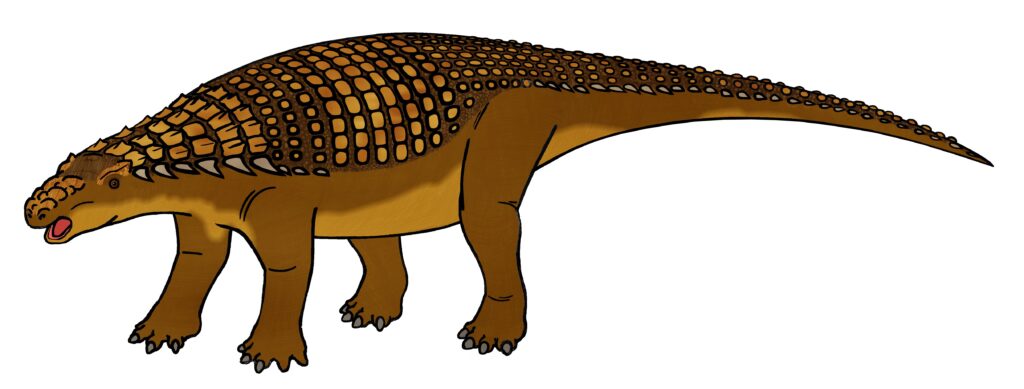
The discovery of these unexpected color patterns has fundamentally challenged the traditional imagery of dinosaurs that dominated scientific and popular culture throughout most of the 20th century. For generations, dinosaurs were portrayed with reptilian, usually monotone, scaly skin in shades of green, brown, or gray – representations based more on assumptions than evidence. These new findings have triggered a wholesale reimagining of dinosaurs in museums, scientific illustrations, and media portrayals. Modern paleontological art now features dinosaurs with vivid patterns, iridescent feathers, and complex color distributions that would have been considered wildly speculative just two decades ago. This shift represents one of the most dramatic visual revisions in the history of paleontology, comparable to the transition from portraying dinosaurs as slow, tail-dragging creatures to the active, dynamic animals depicted after the “Dinosaur Renaissance” of the 1970s. The revisions extend beyond just adding color; they involve reconsidering dinosaur behaviors, environments, and evolutionary relationships in light of this new understanding of their visual appearances. Museums worldwide are updating their exhibits to reflect these discoveries, with new models and illustrations showcasing dinosaurs as the colorful, visually striking animals that evidence now suggests they were.
Limitations in Determining Dinosaur Colors

Despite the remarkable advances in determining dinosaur coloration, significant limitations still constrain our understanding. The preservation of melanosomes requires exceptional fossilization conditions, meaning that color evidence exists for only a tiny fraction of dinosaur species. Even in these rare cases, scientists can typically only determine melanin-based colors (blacks, browns, reddish hues), while structural colors like blues and greens, and pigments other than melanin (like carotenoids that create yellow and orange in modern birds), are much harder to identify with certainty. Preservation biases also affect our understanding – feathers and soft tissues preserve more readily in certain environments, leading to an overrepresentation of specimens from specific localities like the fine-grained lake sediments of China. Time degradation presents another challenge, as even the best-preserved melanosomes may have altered slightly over millions of years, potentially affecting color interpretation. Additionally, the colors identified represent only a snapshot of the animal’s appearance – seasonal color changes, juvenile colorations, or sexual dimorphism remain largely unknown. Scientists must exercise caution in their reconstructions, acknowledging that while we now have solid evidence for some dinosaur colors, complete and accurate coloration patterns for most species remain elusive.
Future Frontiers in Dinosaur Color Research
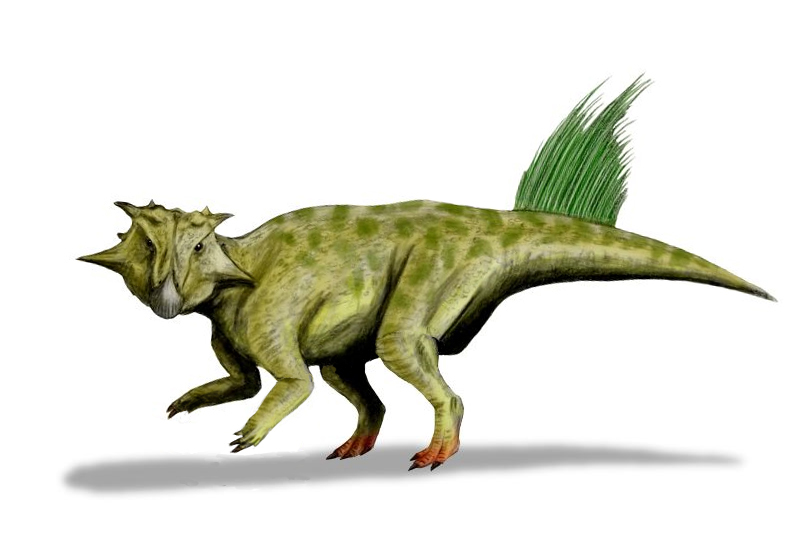
The field of dinosaur color research stands at an exciting frontier, with several promising avenues for future discoveries. Emerging technologies like Raman spectroscopy and synchrotron X-ray fluorescence are becoming increasingly sensitive, potentially allowing scientists to detect subtle chemical signatures of non-melanin pigments that have previously gone unnoticed in fossils. Machine learning algorithms are being developed to better analyze melanosomes and other preserved structures by comparing them to vast databases of modern animal coloration, potentially improving accuracy in color reconstruction. New fossil discoveries, particularly from understudied regions of the world, may yield specimens with exceptional preservation that provide color evidence for dinosaur groups currently lacking such information. Scientists are also developing more sophisticated models for inferring dinosaur coloration based on ecological niche, phylogenetic relationships, and evolutionary constraints, allowing for more educated predictions about species without direct color evidence. As these techniques advance, researchers anticipate uncovering even more surprising color patterns and potentially identifying patterns of color evolution across major dinosaur lineages. The ultimate goal is to develop a more comprehensive understanding of how colors vary across different dinosaur species, between males and females, among juveniles and adults, and possibly even across seasons.
Conclusion: A More Colorful Prehistoric World

The discoveries of unexpected color patterns in dinosaurs have transformed our vision of the prehistoric world from a monochrome landscape to a vibrant ecosystem filled with visually striking creatures. These findings remind us that the past was not a drab prelude to the present but rather a colorful world in its own right, with dinosaurs evolving sophisticated coloration for many of the same ecological and social reasons observed in modern animals. As research techniques continue to advance, we can expect even more surprising revelations about dinosaur appearances that will further reshape our understanding of these magnificent creatures. The science of dinosaur coloration illustrates how new technologies and approaches can overturn long-held assumptions in paleontology, demonstrating that even after more than 150 years of dinosaur research, these ancient animals still have many secrets to reveal. By continuing to investigate the colors and patterns that adorned dinosaurs, scientists are painting an increasingly accurate and nuanced picture of the Mesozoic world, bringing us closer to truly understanding these fascinating animals that dominated Earth for over 160 million years.

